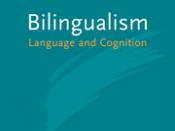Theories of error are known as Khyativadas. Kyati means cognition, here erroneous cognition. Khyati means erroneous cognition. Error (of when we perceive silver in the shell) is regarded as a big issue only when we are to explain such a perception and are confronted with the thought that is it because of the object itself or our subjective attitude towards it. Either way in explaining away any khyati vada, the status of the object is put in the parameters.
The Buddhist Sunya vadins consider the object to be unreal. Nothing is real and the illusory object is no exception. Illusion consists in the unreal appearing as real. When valid knowledge arises, the illusory object is sublated. This may be called Asatkhyati. Because of sublation it is not real. Valid knowledge? This is difficult to imagine as Nagarjuna had written an entire treatise, Vigrahavyavartani refusing to give any status to pramanas by method of illocution.
Anyhow the views of the other schools consider the object of erroneous cognition to be real in some sense. It may be that what is real within as an idea, appears as if without. This is according to the Atma-khyati (apprehension of the cognition(atma) by itself) of the Buddhist Vijnanavadin. Or it may be that error is due to non-discrimination between two real objects one remembered and the other seen. This is the akhyati of Samkhya. Or, it may the appearance here of a thing that is elsewhere, and is cognized through a type of extra ordinary perception. This is the anyatha-khyati vada of the Nyaya Vaisesika. Or error may be due to any positive wrong knowledge but due to a mere negation of non apprehension due to certain weakness of the mind of two distinct experiences combined. This is the akhyati professed by the Prabhakara...


